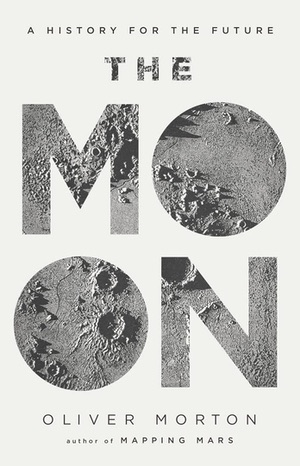Review: The Moonby Jeff Foust
|
| While the publication of The Moon coincides with the 50th anniversary of Apollo 11, very little of the book is about Apollo itself. |
It’s unlikely, though, that any of this new crop of books will be as wide-ranging, and as entertaining, as The Moon by Oliver Morton, a staff writer at The Economist. The book is a collection of essays that examines all those aspects of the Moon, and more, and does so in a way that will be thought-provoking even for those familiar with those topics.
The book chapters are vaguely chronological, starting with our early understanding of the Moon, then its initial exploration in Apollo, and finishing with an examination what the future might hold in terms of a human return and even settlement. But each chapter is an adventure in and of itself. The first chapter, “Reflections,” starts with early 21st century observatories looking at the Moon but then goes through Galileo’s observations of Earthshine on the crescent Moon, then to radar and radio bounces off the Moon and observations of the Moon recorded by the Apollo 8 astronauts, finally returning to those modern-day telescopes, which were taking spectra of the Earthshine to know what to look for as they seek inhabited exoplanets. That path might sound convoluted, but on the page it flows smoothly from one section to the next, a curious writer guiding the reader along a path that brings them back to the beginning, enlightened.
While the publication of The Moon coincides with the 50th anniversary of Apollo 11, very little of the book is about Apollo itself. Morton devotes just one chapter of eight to the program, and that is a high-level overview that will offer little new to readers other than his observations and perspectives on the program. If nothing else, his description of the shape of the lunar module’s ascent stage (“a stubby-circular face like that of a somewhat satanic Thomas the Tank Engine”) guarantees you will not look at that spacecraft the same way again.
Later chapters examine the prospects for a human return to the Moon. This includes some references to NASA’s plans (although the administration’s announcement in March that accelerated the timetable for a human return to 2024 was too late to make it into the book), as well as what China may do. He also examines the visions of Elon Musk and Jeff Bezos, whose broader visions of humanity’s future in space may support a return to the Moon.
| “There was a time when the Moon, standing for all things that rockets might reach, functioned as an image of the future,” he writes. “Now it seems, at best, a future among others—and a slightly retro one.” |
In these chapters, Morton sounds like someone who wants to believe humans will return to, and stay on, the Moon, but who retains significant doubts. He often refers to this as “the Return,” but accepts this is not as preordained as it sounds. For example, he examines the possibility of establishing a base on the Moon to mine ice, transporting it back to Earth orbit where it could be sold as fuel. But, he notes, the business case for such a facility likely relies on low-cost access to space using vehicles like SpaceX’s Starship; yet, those vehicles could undermine that market for lunar ice by simply transporting water from Earth.
And, while he acknowledges the advances of the private sector, he does not uncritically idolize them. Musk, he notes, “has led the most successful spacecraft development programme since Apollo,” and that the company’s future Starship could “mop up NASA contracts” for lunar missions should the Space Launch System go by the wayside at some point. Yet, he writes, Musk “is also a prick” that qualifies any admiration of his achievements. (Bezos gets off easier, but Morton says one “should not discount the possibility of prickishness.”)
That ambivalence about our future on the Moon, and the role of the Moon in our future, is made clear in a passage late in the book, after an examination of the Moon’s place in science fiction. “There was a time when the Moon, standing for all things that rockets might reach, functioned as an image of the future; that was how science fiction used it, that was what the Apollo programme made it,” he writes. “Now it seems, at best, a future among others—and a slightly retro one.” Although it may be retro, it’s clear the Moon is still inspirational for many, including Morton, who still believe—or at least hope—it is a part of humanity’s future, in one manner or another.
Note: we are temporarily moderating all comments subcommitted to deal with a surge in spam.
